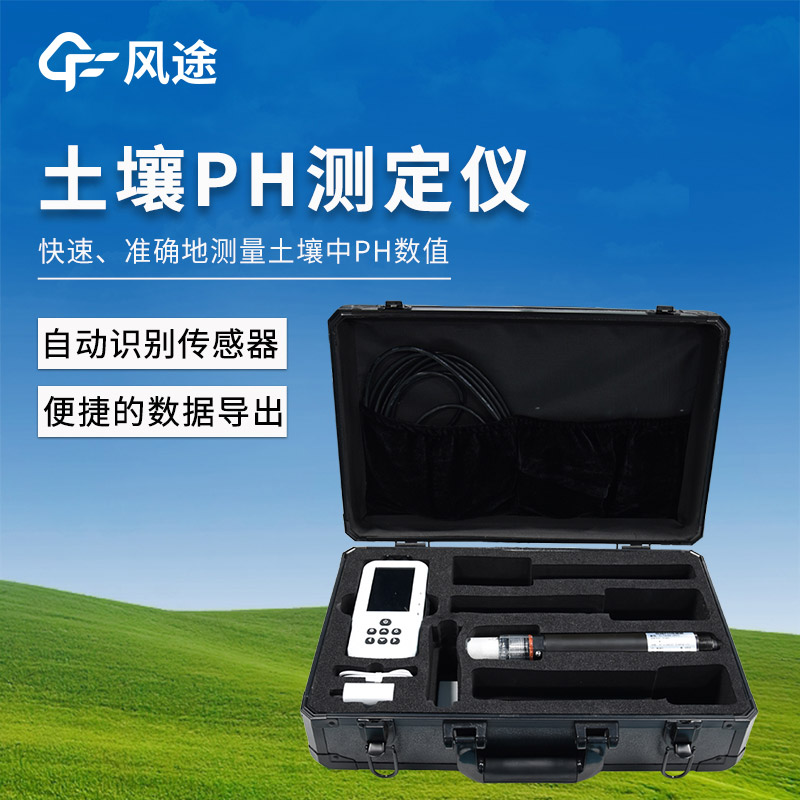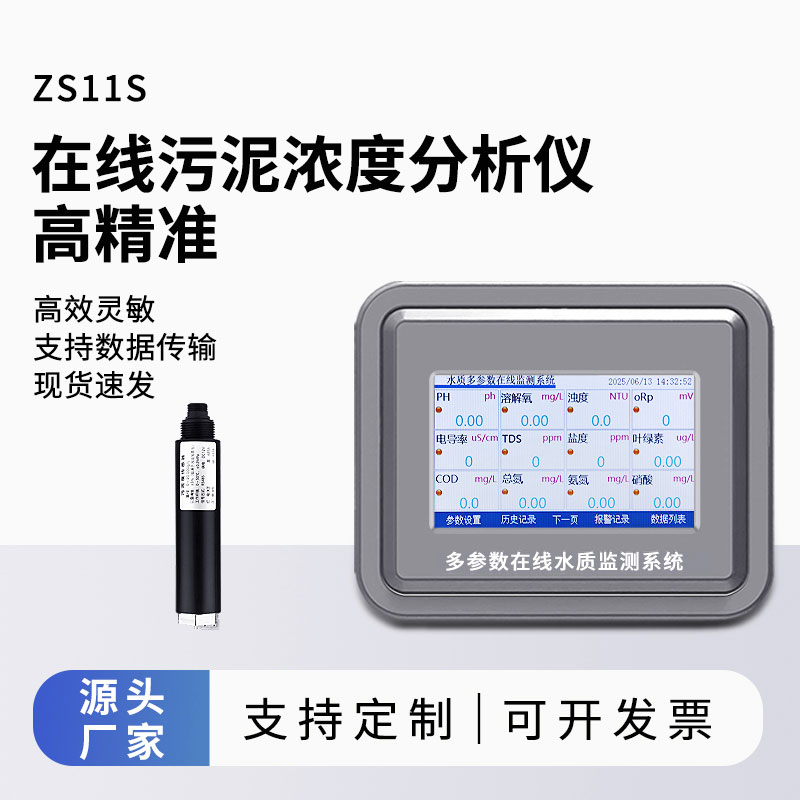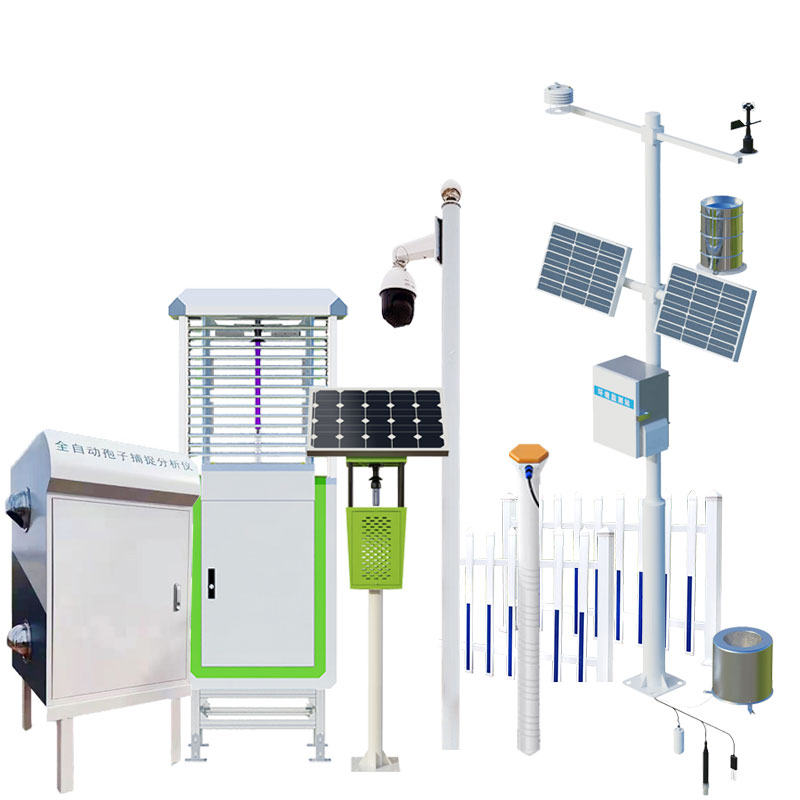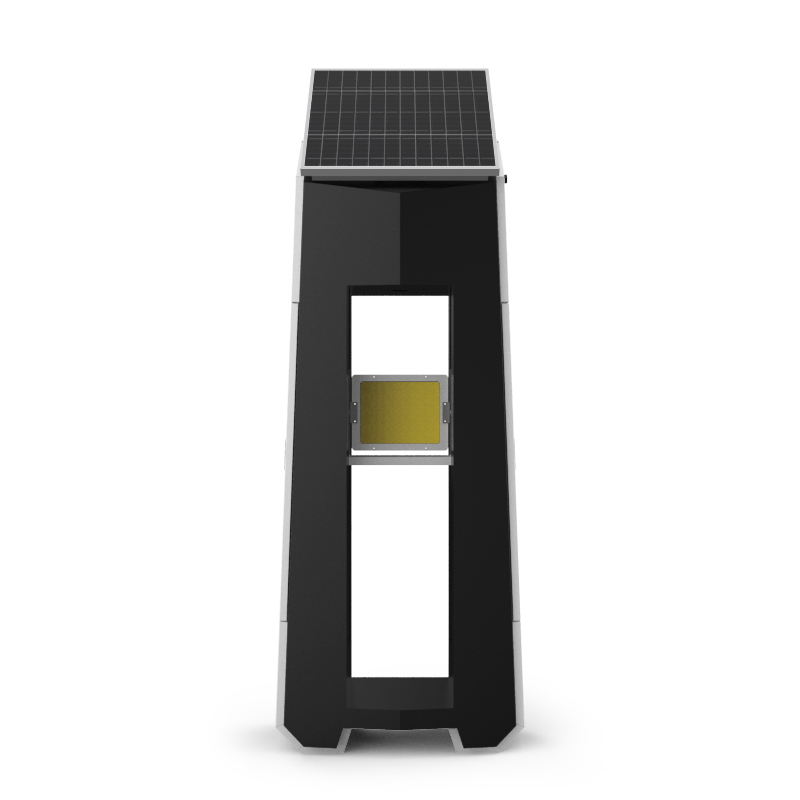The availability of soil nutrients varies under different pH conditions. For example, phosphorus is most easily absorbed when the pH ranges from 6.0 to 7.5, and extreme pH values can limit nutrient utilization. Soil microorganisms are most active when the pH is between 6.0 and 7.5, while extreme pH values can inhibit their activities, affecting the decomposition of organic matter and nutrient cycling. Different plants have specific pH requirements. If the pH exceeds the suitable range, it will affect root development and nutrient absorption, leading to poor growth. Measuring pH can guide soil improvement, and the acidity and alkalinity can be adjusted by adding lime or sulfur. Acidic soils may increase the solubility and toxicity of heavy metals. Regularly monitoring pH can prevent pollution and also helps optimize fertilization strategies, avoiding waste and reducing pollution.
The Soil pH tester is a highly integrated soil testing device. With an integrated design, it can quickly and accurately measure the pH value of the soil. Whether it is for instant detection of soil parameters at different locations and depths or for long - term continuous monitoring, it can perform tasks excellently, providing users with comprehensive and detailed soil data analysis.
This instrument has a wide range of application fields, covering industries such as agriculture, forestry, geological exploration, plant cultivation, water conservancy, and environmental protection. In soil moisture detection, it provides key data; in dryland water - saving irrigation, it provides a basis for formulating scientific irrigation strategies; in precision agriculture, it helps achieve refined soil management and promotes the sustainable development of various industries.
The instrument features a compact appearance design, which is convenient to carry and suitable for long - term field operations. The operation interface is simple, and users can get started without complex training. After the main unit is connected to the sensor, it can not only store data manually but also independently set the sampling interval according to needs to achieve automatic data storage, effectively improving work efficiency.
It is equipped with a large - screen color LCD display that can display the pH value of the measured environmental factor, the number of data groups, and the low - voltage status of the device in real - time, with clear and intuitive information. It has a built - in large - capacity memory that can store up to 10 million pieces of data and has a power - off data protection function to ensure the security and integrity of the data.
When different - parameter sensors are connected, the instrument can automatically identify them to ensure the coordinated operation of the sensors without affecting the measurement accuracy. Users can also freely combine different sensors according to detection needs. The sensor interfaces with different parameters can be used interchangeably to meet diverse measurement scenarios.
In terms of detection efficiency, the instrument supports multi - channel automatic detection expansion, allowing multiple sensors to be connected and detected simultaneously, greatly improving work efficiency, especially suitable for measurement tasks at multiple locations or different depths. Data export is convenient. The recorded data can be transmitted to a computer through a USB interface, and it supports output in EXCEL format and can generate data curves for subsequent data analysis and processing.
The instrument has an over - limit warning function. Users can set the over - limit area by themselves. When the data exceeds the preset range, the system will issue a warning, making it easy to quickly detect abnormal situations. It can also be optionally equipped with a 4G networking function to upload the historical data stored in the device to the intelligent cloud agriculture platform, realizing remote data management and long - term trend analysis. Users can access the cloud platform through the network to view and manage data anytime and anywhere, greatly improving the efficiency of data utilization and making soil detection work more intelligent and efficient.

This paper addresses:https://fengtusz.com/industry/652.html









